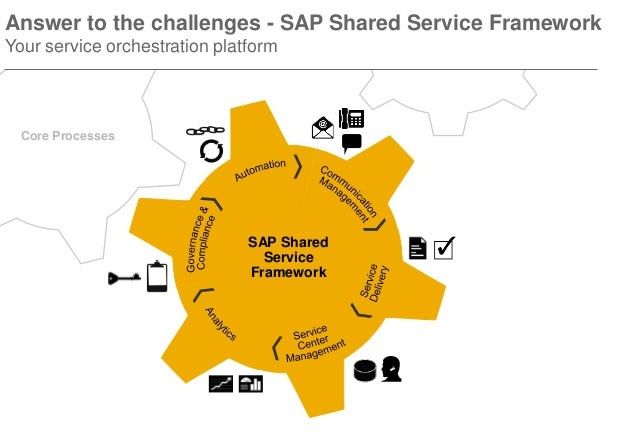SAP Shared Service Framework
Definition -What is SAP Shared Service Framework?
The SAP Shared Service Framework is an intelligent module that can help you enhance the operational processes of a company. With this in place, it is possible to control and leverage the structure of different departments of a company such as finance, SAP HR (Human Resource), and IT to name a few. It improves the overall efficiency and effectiveness of an organization. When software has so much impact on numerous departments at once, it becomes quite important that it is a vital part of the company. The SAP shared service framework underlines services developments that can be applied across various functional areas of a SAP system.

Some Features that Highlight the Software
The shared service framework proves beneficial for companies that have their branches located in numerous geographical areas across the world. This framework provides a platform for all the branches to integrate their business procedures, all across the global market, and unify operational methods through the larger organization. Some of the other features that companies may enjoy with this SAP (Systems, Applications, Products) module are enlisted below:
- Reduced costs: With processing costs included in different departments being minimized, the money can be invested smartly in other areas that would help a company expand, grow and succeed.
- Improved transparency: Since the framework is uniform for all the branches of a global company, the cat of monitoring tasks become easier and the processes become more transparent. This transparency further leads to increased efficiency and improved procedures for all involved tasks.
- Quick Implementation: One of the attractive features for any software is how quickly it can be implemented in an organization set-up without disrupting the working environment. SAP shared service framework can not only be implemented quickly but also provides regular updates that enhance its performance. Additionally, it is equipped with tools and practices that can take effect on the entire global organization at the same time.
- Interconnection between systems: This framework provides a seamless interconnection between different systems of a company. Most of the times, there are tasks in the company that need to be processed, shared and executed on different systems. Some of the underlying business processes may not be in the same system as the transactions and data. All these need to be connected to a function properly. The SAP Shared Service Framework facilitates this ability and connects various tasks across diverse systems. The extended cooperation provided by the framework ensures that the continuity of the work persists and successful results are achieved.
Other Advantages of SAP Shared Service Framework
- It is possible to gain visibility into various tasks and processes which lead to better decision making processes. The software provides great insights which prove to be useful for the company in the long run.
- The scale of the economies involved can be leveraged to a great extent due to the automation of the entire platform. All the processes are automated, thereby reducing the time of execution along with other allied costs.
- It offers operational flexibility that is required for all kinds of business expansion. When there is a merger or acquisition, or expansion into a new branch, this framework offers flexibility to make the underlying processes simple and quick.
- The company can assess customer satisfaction levels by monitoring management and surveys.
So, are you ready to integrate the SAP Shared Service Framework for better bottom line figures and overall support - begin today!